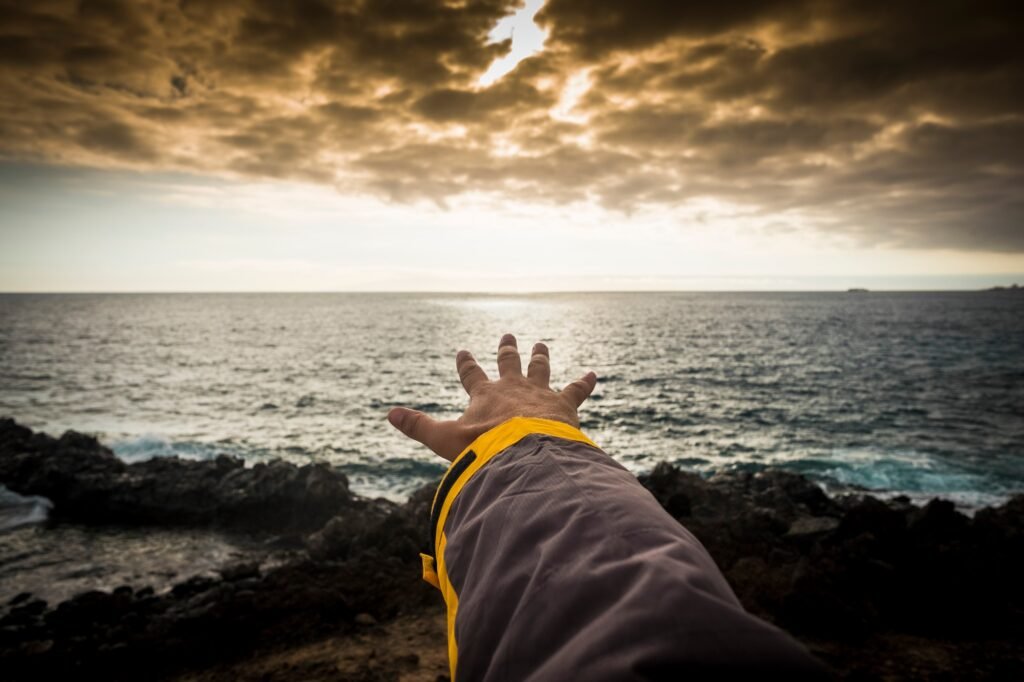Latest UFO Sightings in Brazil 2025 [Updated Reports, Videos, Military Response]

Brazil stands out as a global hotspot for UFO activity, with both mystery and curiosity swirling around its skies. In 2025, reports of strange lights and unexplained craft have surged, drawing attention from people worldwide. Soldiers and pilots have stepped forward alongside everyday Brazilians, each sharing their part of this growing wave.
These stories fuel debate, but they also reveal how Brazil’s UFO events unite experts and the public in a search for answers. As more reports surface, the world’s focus sharpens on Brazil—keeping everyone watching, waiting, and asking what might happen next.
Watch recent footage of Brazil’s UFO sightings on YouTube.
Unprecedented Surge: UFO Sightings Across Brazil in 2025
Brazil’s UFO reports have exploded in 2025, capturing massive attention in both cities and quiet countryside towns. Fresh clusters of sightings are popping up―sometimes within days of each other, judged by photos and shaky phone videos lighting up social media. People from all walks of life are watching their skies, and for many, sharing what they see feels less like a hobby and more like a cause. Several key areas have become focal points, driving new waves of investigation and speculation.
Major Hotspots and Ongoing Trends
 Photo by Derpy CG
Photo by Derpy CG
In 2025, Brazil’s largest cities and sprawling rural landscapes alike are buzzing with unusual aerial activity.
Key hotspots include:
- Rio de Janeiro: High-rise apartment dwellers and beachgoers often report strange lights darting over the bay or buzzing hillside favelas.
- Federal District (Brasília): The nation’s capital has logged a sharp spike in late night UFO reports, with government staff and aviators chiming in.
- Northern and Midwest Regions: More rural zones, especially near the Amazon basin, have seen clusters of sightings—often in isolated villages or farm communities.
What sets this year apart is how concentrated these sightings are. Reports tend to cluster after viral social media posts, turning isolated events into rolling waves of speculation and group investigations. Areas around Brasília, for instance, have seen weekly spikes coinciding with local news coverage or trending hashtags.
Regional differences play a big part:
- Urban areas usually report lights and sudden movements over city skylines.
- Rural witnesses describe low-flying crafts or shimmering orbs over forests and lakes.
Social media is amplifying patterns like never before. A video snapped in São Paulo can be shared coast to coast in minutes, inviting spotters to compare notes and validate each other’s experiences. For a look at past locations and sightings, see the full list of UFO sightings in Brazil.
Notable Recent Cases and Eyewitness Testimonies
This year’s surge includes some cases that break the mold, offering both mystery and mounting documentation.
Some of the most talked-about 2025 cases feature:
- Luminous spheres hovering over Brasília: Eyewitnesses in multiple districts captured similar glowing objects zipping at impossible speeds.
- Hypersonic maneuvers over Rio de Janeiro: Several pilots and local air traffic controllers have reported objects shifting direction at angles far beyond what current aircraft can handle.
- Multiple photographic and video clips: High-quality night footage from mobile phones and dashboard cams have made rounds online, sparking widespread debate about their authenticity.
Eyewitnesses are stepping forward with fresh urgency in 2025, eager to share credible details. A well-known commercial airline pilot described, “A silvery, dart-shaped object shot across the cockpit. It made a right turn fast—faster than any plane in the fleet. I’ve flown for 25 years. Nothing comes close to that speed.”
Local residents are just as vocal. Near Brasília’s outer neighborhoods, a group of nighttime joggers filmed, “Three balls of light swirling over the park. They vanished silently. We all stared, waiting for a sound—there was nothing.”
For those interested in seeing recent discussions and fact-checking, videos like this UFO craft found in Brazil in 2025? break down the visual evidence and push for more official answers.
Expert interviews and analyses also highlight the sheer pace and frequency of these new cases. Every day on social media, new photos and sightings go viral, letting both skeptics and true believers weigh in. The debate is unfolding in real time, and each fresh sighting pulls even more eyes to Brazil’s skies.
Military Involvement and Government Response
Brazil has a long and storied relationship with UFO sightings, marked by formal military efforts, changed policies, and public calls for more information. The government’s response in 2025 builds on a history of structured investigations and new transparency, taking both skeptics and believers seriously. Let’s look at how military agencies and document releases are shaping our understanding of the latest sightings.
The Role of SIOANI and Military Documentation

Photo by Caleb Oquendo
Brazil’s formal approach to UFO sightings goes back to 1969 with the creation of SIOANI (the System for the Investigation of Unidentified Aerial Objects). SIOANI was designed to centralize and investigate UFO reports from military, civilian, and aviation sources. Its founding marked Brazil as one of the few countries to treat these cases with the same seriousness as air traffic threats.
SIOANI’s main functions included:
- Collecting and archiving military and civilian UFO sightings.
- Dispatching teams to verify, measure, and document cases on-site.
- Coordinating with aviation, police, and radar analysts when sightings involved physical or radar evidence.
Although SIOANI was dissolved in the 1970s, its legacy shaped Brazil’s modern military UFO protocols. Events like the Varginha UFO case and Operation Saucer proved that the military continues to play a key role in investigating unexplained aerial events, often sending aircraft or teams to intercept or observe high-profile sightings. To read more about these historic military efforts, see an in-depth report on the Varginha UFO incident and the 70-year military investigation of aliens in Brazil.
Recently, military involvement includes:
- Tasking air traffic controllers and pilots with logging unusual encounters.
- Issuing public statements to address national concern, especially after clusters of credible reports.
- Coordinating with scientific investigators to rule out weather, drones, or foreign aircraft.
These actions show a real shift toward transparency and open inquiry, building public trust while adding rigor to the investigation process.
Public Access to Declassified Reports
Brazil’s move to open once-classified military and government UFO files changed the conversation for thousands of citizens, researchers, and journalists. Declassification now gives anyone the chance to review detailed case files, interviews, sketches, and official statements. For example, the Brazilian National Archives recently released a wave of documents, making Brazil a global leader in UFO transparency.
The main effects of these open archives:
- Empowering amateur investigators with first-hand data—no need to rely on rumors or leaks.
- Letting people track patterns and check official responses to major events in real time.
- Sparking wider media coverage and stronger public debate about government policy and the nature of the sightings.
High-profile cases, like the “Official UFO Night” in 1986—when military jets chased dozens of unexplained lights—are now available through Brazil’s (Official UFO Night in Brazil report). These public files include pilot accounts, radar logs, and communication transcripts, making it hard to dismiss the events as simple mistakes.
Brazil’s push for transparency matches calls around the world for governments to open their UFO archives. With this new openness, anyone interested in the truth behind the latest wave of sightings has the tools they need to dig, question, and decide for themselves. For comparison with how other countries handle these files, see how UFO documents are classified in the U.S. compared to Brazil.
Brazil’s model shows that government and military action can shape the national conversation—inviting people to move beyond speculation and contribute directly to the search for answers.
Evidence Beyond Sightings: Videos, Photographs, and Physical Traces
The story of UFO sightings in Brazil doesn’t stop at what witnesses claim to see. Hard evidence comes in many shapes—glowing images, strange metal, radar echoes, and digital footprints that spark fierce debate. As technology spreads across the country, the proof people collect keeps changing and growing, drawing fresh lines between what’s “just a story” and what demands attention.
Physical Evidence: From Metal Fragments to Radar Data
Brazil’s long UFO history features more than just rumors. Physical clues have been recovered and sent for expert review, making these cases stand out from ordinary tales.
Several well-known cases involved actual material evidence:
- Metal fragments: In a few events, the military reported finding odd metallic debris at landing sites. These pieces have triggered laboratory testing by official agencies, checking for strange alloys or unlikely manufacturing origins.
- Radar recordings: During incidents like the 1986 “Official UFO Night in Brazil,” radar operators locked onto fast-moving targets that showed up in the sky but left no sign of conventional aircraft. The Brazilian Air Force released logs proving objects traveled at high speed, with unpredictable changes in direction—behavior that modern airplanes can’t match. The Official UFO Night in Brazil is still one of the world’s most well-documented radar-visual encounters.
Scientists and skeptics weigh in every time such evidence surfaces. Metal samples have been checked for manmade elements, cross-checked with aerospace standards, and debated for possible Earthly explanations—but some test results stay strange or inconclusive. Despite these checks, experts keep questioning the chain of custody, possible hoaxes, and whether unusual readings could have simple origins.
Incidents like the Varginha UFO case are popular because they combine witness stories with search-and-recovery missions. In 1996, locals described a crash and strange beings. Military and scientists studied the scene, recovering physical traces that remain a focus of investigation years later.
Viral Videos and Citizen Science
The evidence isn’t just handled by scientists and officials anymore. With everyone carrying a smartphone, citizens are now the frontline recorders and investigators. The last decade brought an explosion of social media clips, dashcam footage, and crowd-sourced digital proof.
Today’s typical UFO event in Brazil plays out like this:
- People spot unusual lights or shapes.
- They pull out a phone, snap photos, or record video.
- Someone uploads it—often within minutes—to platforms like YouTube, Twitter, or WhatsApp.
- Thousands or even millions see it, replay it, and add their own analysis.
Videos like this Brazilian UFO Baffles Scientists have become windows into the debate. Ordinary people catch things that satellites or officials might miss, and fast uploading means evidence gets reviewed before it can be hidden or edited. On the other hand, digital sharing fuels as much skepticism as belief:
- Analysts debate pixel glitches, camera effects, and staged hoaxes.
- Fact-checkers match UFO videos to airline flight data, satellite paths, and drone traffic, exposing clever fakes.
Thanks to the rise of citizen science, some sightings reach a level of detail and scrutiny that rivals official investigations. Crowd-sourced groups now track events in real time, compare reports, and use mapping or video analysis tools to weed out false alarms.
The flood of digital evidence has changed the discussion. Reliable videos and photographs demand careful review, while physical samples and radar logs from official sources keep the hunt for truth grounded in facts. Ongoing technological change means Brazil will keep generating both raw mystery and hard data—sometimes in the same viral minute.
Cultural Impact and Brazil’s Unique Openness to UFO Phenomena
Brazil stands apart when it comes to UFO stories and how people react to them. Social acceptance and national pride surround the subject, and reports from all walks of life get a fair hearing. This openness isn’t accidental—deep spiritual ideas, a lively popular culture, and vibrant media coverage play big roles in shaping how people see the unexplained in Brazilian skies.
Spiritualist Influences and National Identity
Spiritual beliefs shape the way Brazilians talk about UFOs. Brazil is home to a strong tradition of spiritualism, blending ideas from Spiritism, Afro-Brazilian religions, and Catholic devotion. These worldviews often accept that there are unknown forces and visitors beyond what we can see.
Many communities frame UFOs within ideas of life after death, cosmic intelligence, or ancestors watching over people. In the largest Spiritist centers, group discussions on UFOs blend with regular lessons about spirits and other worlds. Events in places like Brasília or the interior often feature spontaneous gatherings where locals swap personal stories, share sightings, or wonder aloud if “extraterrestrial visitors” are spiritually guided. It isn’t uncommon to see:
- Neighborhood meetings led by Spiritist leaders, bringing in both skeptics and believers.
- Local radio shows inviting listeners to call in with UFO tales, connecting them to bigger questions about faith and the unknown.
- Festivals and fairs where speakers discuss UFOs as part of humanity’s search for higher truths.
These open conversations build a unique sense of national identity. Brazilians have turned the UFO experience into a kind of social glue, using it to bridge gaps between spiritualism, science, and pop culture. Coverage in outlets like El País highlights how this blend helps the wider public accept and discuss new sightings without fear of ridicule.
Mainstream and Alternative Media Coverage
Media in Brazil—both traditional and digital—drives how UFO stories grow, shift, and spread. Mainstream news channels report verified sightings, press briefings, or high-profile interviews with officials. These stories can quickly shape public debate, especially when military or scientific voices weigh in.
Social media, on the other hand, builds momentum around every new photo or video shared online. Influencers on YouTube, Instagram, and TikTok break down recent events, post analyses, and review eyewitness clips. Citizen journalists and local experts provide real-time updates, while forums and hashtags help new witnesses speak up.
Here’s how the information flow works:
- Major newspapers, such as those cited by the BBC, run front-page headlines after significant incidents or wave clusters.
- Viral WhatsApp groups and local Facebook pages allow rural communities to share their sightings with the wider country.
- Influencers, with tens of thousands of followers, post rapid-response videos offering opinions, explanations, or counterarguments—all of which boost the visibility of each new event.
Alternative news sites and independent podcasts also have growing sway. They carry stories that traditional outlets might ignore, sometimes calling for more transparency or government accountability. For an overview of classic and ongoing cases, the Wikipedia page on UFO sightings in Brazil chronicles both official and grassroots reports.
Together, all these voices—media giants, citizen reporters, and online influencers—shape not just what people know, but how they feel. Debate stays lively, and the walls between expert and eyewitness, popular and fringe, get blurred. This openness keeps Brazil at the forefront of UFO conversation, letting every voice be heard in the search for clarity.
Conclusion
Brazil’s role as a global hub for UFO investigations has only grown in 2025, driven by both official attention and nonstop public reporting. The country’s openness—seen in the release of military files and regular media coverage—has helped move the dialog from whispers and rumors to public records that anyone can check for themselves. This transparency sets a new standard, giving the world real material to discuss and analyze.
The sheer number and quality of reports, from city centers to distant rural areas, keep Brazil in the spotlight, making it hard to look away or dismiss what’s unfolding. Each new sighting adds to a growing body of hard evidence and fuels smart debate among experts and everyday people alike.
Readers should keep tracking these events, share credible reports, and press for more open investigations. Stay engaged, ask questions, and watch how this story shapes science and society in the years ahead. Thank you for following this ongoing mystery—share your thoughts or recent findings and help build a clearer picture for everyone watching the skies.







![Latest UFO Sightings in Brazil 2025 [Updated Reports, Videos, Military Response]](https://mankunawabu.com/wp-content/uploads/2025/07/adventure-concept-for-man-hand-like-to-touch-the-horizon-free-travel-spirit-150x150.jpg)
